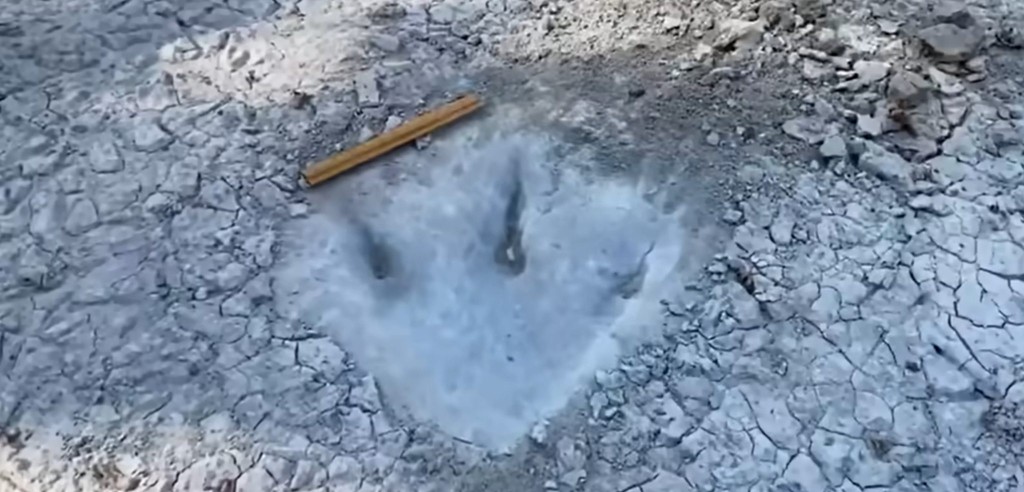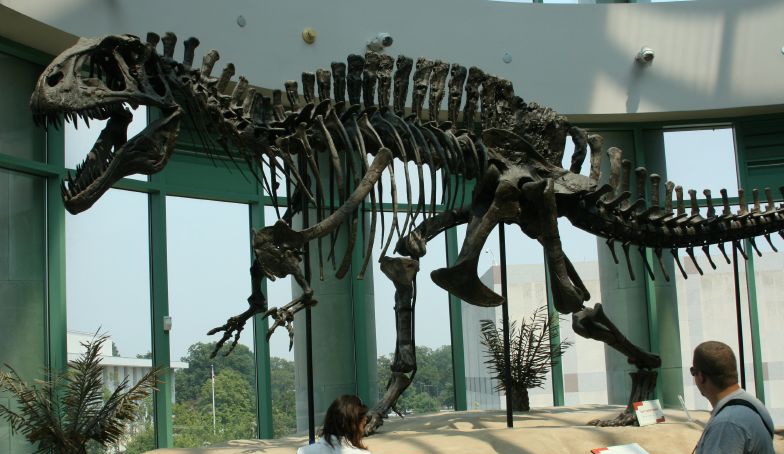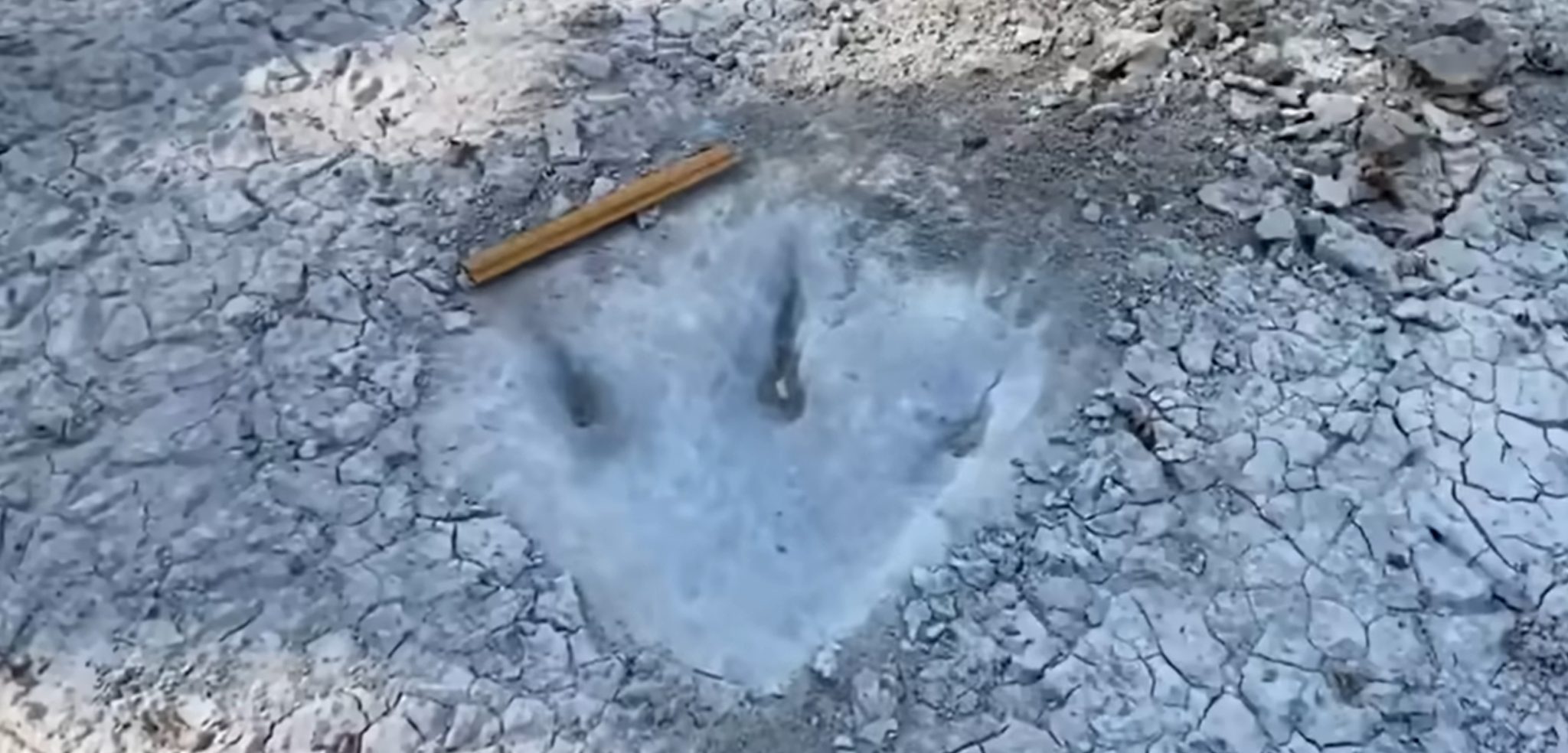
Droughts aren’t all bad. Sometimes the receding of rivers reveals amazing things, such as the tracks of a meat-eating giant that roamed Cretaceous-Era Texas 113 million years ago.
Prints mostly left by the Acrocanthosaurus—a theropod that stood 15 feet and weighed 7 tons have emerged in recent weeks as the Paluxy River has dried up almost entirely in most parts of Dinosaur Valley State Park in Glen Rose, Texas.
Dinosaur Valley State Park is rather unique, says Paleontologist Timothy Rose. Visitors are given buckets with glass bottoms and encouraged to roll their pantlegs up, kick off their shoes, and go have a look through the bucket at the tracks which were known to science before the recent drought.
However what the drought did do is reveal dozens more tracks than anyone knew existed.

Arcocanthosaurus was a big impressive dinosaur that would have looked like T-Rex, only a bit smaller, with three toes instead of two, and an array of impressive spines on its back.
READ ALSO: 100 Million-Year-Old Footprints of Giant Dinosaur Found at Restaurant in China
Definite Acrocanthosaurus fossils have been found in the Twin Mountains Formation of northern Texas, the Antlers Formation of southern Oklahoma, and the Cloverly Formation of north-central Wyoming and possibly even the Arundel Formation in Maryland.
Rose, speaking to Australian news at the time, explained the tracks show the animals moving around slowly, perhaps hunting, perhaps not, but the lack of any fast or leaping movements is clear.
TAKE an intimate look at the tracks in the video below…
STEP On The Social Media Buttons Below To Share This Cool Discovery…




















